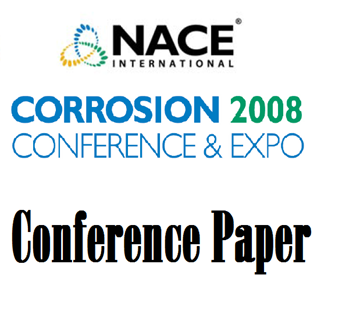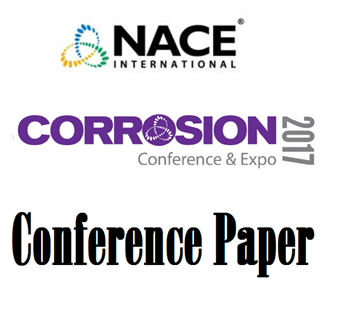Search
Products tagged with 'dissolved oxygen'
View as
Sort by
Display
per page
08271 Effects of Oxygen, Temperature and Salinity on Carbon Steel Corrosion in Aqueous Solutions; Model Predictions versus Laboratory Results
Product Number:
51300-08271-SG
ISBN:
08271 2008 CP
Publication Date:
2008
$20.00
Applicability of 15%Cr and 17%Cr Martensite-Based Stainless Steel OCTG Materials for Seawater Injection Service
Product Number:
51321-16310-SG
Publication Date:
2021
$20.00
Biocide Compatibility with Oxygen Scavenger: A Case Study from Oil Field
Product Number:
51323-19112-SG
Publication Date:
2023
$20.00
Corrosion Resistance Of Stainless Steel Pipelines In Seawater During Pre-Comissioning Phase
Product Number:
51323-19137-SG
Publication Date:
2023
$20.00
Corrosion Risk Evaluation of Duplex Stainless Steel UNS S82551 in Treated Seawater Injection Well Service
Product Number:
51317--9608-SG
ISBN:
9608 2017 CP
Publication Date:
2017
$20.00
Effect of Dissolved Oxygen on Carbon Steel Corrosion and Particulate Formation. Part 1: Rotating Cylinder Electrode Experiments
Product Number:
51324-20718-SG
Publication Date:
2024
$40.00
Effect Of Dissolved Oxygen On The SCC Susceptibility And Oxidation Of Cold-Worked 316L SS In PWR Primary Water
Product Number:
ED22-17254-SG
Publication Date:
2022
$20.00
Effect Of Oxygen Concentrations on Localized Corrosion of Martensitic And Super Martensitic Stainless Steels
Product Number:
51323-18891-SG
Publication Date:
2023
$20.00
Impact Of Dissolved Oxygen Concentration In Seawater Injection Well On The Localized Corrosion Resistance Of Low Stainless Steel Grades
Product Number:
51323-19063-SG
Publication Date:
2023
$20.00
Improved Localized Corrosion Models For Stainless Steels In Aqueous Chloride Environments With Low Levels Of Dissolved Oxygen
Product Number:
51322-17955-SG
Publication Date:
2022
$20.00
Localized Corrosion Limit of Use of S13%Cr (UNS S41427) Connector in Converted Injection Treated Seawater Well
Product Number:
51324-20714-SG
Publication Date:
2024
$40.00
Localized Corrosion of UNS S31603 in Aqueous Ammonium Chloride Environments at Elevated Temperatures and Low Dissolved Oxygen
Product Number:
51323-19125-SG
Publication Date:
2023
$20.00
- 1
- 2












